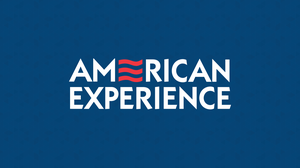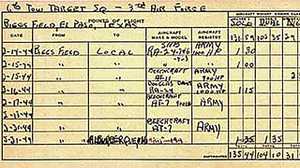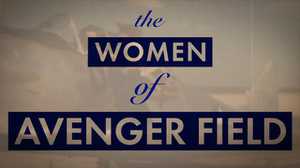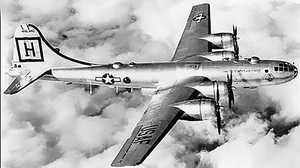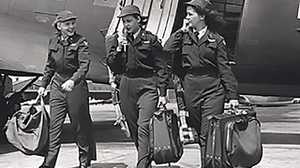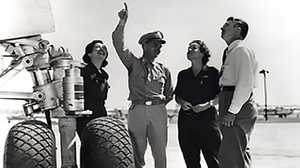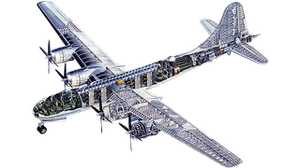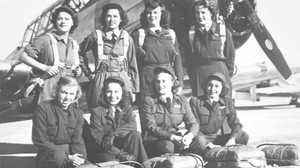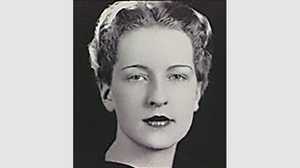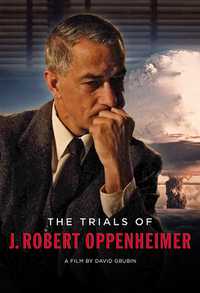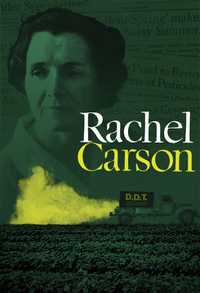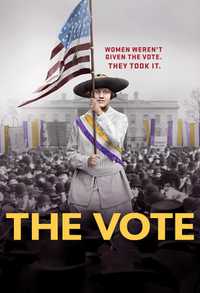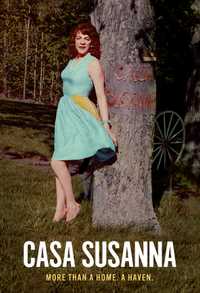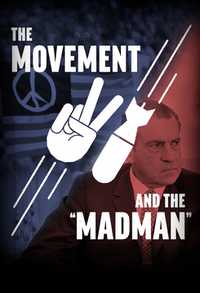Written, Produced, and Directed by
Laurel Ladevich
Edited by
Kathleen Korth
Associate Producer
Bunny Alsup
Narrated by
Mary McDonnell
Music by
Mark Adler
Assistant Editor/Researcher
Cat McGrath
Historical Consultant
Deborah G. Douglas
Cinematography
Mitch Wilson
Aerial Cinematography
Jack Tankard
Assistant Camera
Jack Combs; Scott Herring
Aerial Coordinator
Tom Danaher
Aerial Pilots
Charles Screws
Leroy Lakey
Willie Walker
Don Malm
Sound Design/Rerecording
Michael McDonough
Sound Editing
Scott Sandstrom
Foley Artist
Ryan Purcell
Special Sound Effects
Ben Burtt
Voice Casting
Barbara Harris
Voice of Cornelia Fort
Kath Soucie
Production Assistant
Will Zavala
Travel Provided by
Southwest Airlines
David Shepherd, Berkeley's Northside Travel
Film Processing
CFI
Photo Animation
Video Arts
Video Post-Production
Western Images
Online Editor
Greg Gilmore
Colorist
Gary Coates
Research Support
Dawn Letson
Nancy Marshall Durr
The Woman's Collection, Texas Woman's University
Special Thanks:
Robert and Lorraine Ladevich
Robin Lee
Ann Wood-Kelly
Lt. Col. Betty Jane Williams
Yvonne H. Smith
Maryann Bucknum Brinley
Sura Wood
Phil Paul
Joe Cowan, Chief of Staff, Confederate Air Force
B-29/B-24 Squadron of the Confederate Air Force
Big Country Squadron of the Confederate Air Force
National Park Service, National Capital Region
Sentinels of the Tomb of the Unknown Soldier
Virginia Air and Space Center
Archival Footage
Alberta Kinney
National Archives
National Air and Space Museum
ABC News Videosource
America by Air
Archive Films
EAA Sport Aviation Association
Energy Film Library
Grinberg Film Libraries
Hot Shots Cool Cuts Inc.
University of South Carolina
The WPA Film Library
Archival Photographs
The Woman's Collection, Texas Woman's University
National Air and Space Museum
National Archives
Air Force Museum
Eisenhower Library
Women's Air and Space Museum
Peter Stackpole/Life Magazine (c) Time Inc.
Individual Collections
For AMERICAN EXPERIENCE
Post Production
Frank Capria
Maureen Barden
On-air Promotion
James Dunford
Field Production
Larry LeCain
Bob McCausland
Chas Norton
Robert Tompkins
Series Designer
Alison Kennedy
Chris Pullman
Title Animation
Lizard Lounge Graphics, Inc.
Online Editor
Mark Steele
Series Theme
Charles Kuskin
Business Manager
Christine Larson
Project Administration
Nancy Farrell
Helen R. Russell
Interactive Media
Danielle Dell'Olio
Publicity
Daphne B. Noyes
Johanna Baker
Coordinating Producer
Susan Mottau
Series Editor
Joseph Tovares
Senior Producer
Mark Samels
Executive Producer
Margaret Drain
A Silverlining Productions film
for The American Experience
© 1999 WGBH Educational Foundation
All rights reserved
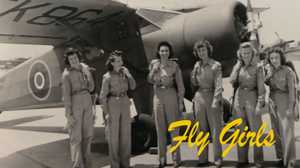
Fly Girls
Breaking barriers in the skies.Film Description
In the midst of World War II, the call went out: women with flight experience were needed to fly for the military. All over the country, young women postponed their weddings, put their educations on hold, and quit their jobs to respond. From 1942 to 1944, more than 1,000 women were trained to ferry aircraft, test planes, instruct male pilots, even tow targets for anti-aircraft artillery practice. Despite serving with grit and determination, women pilots often encountered disbelief and resentment. Thirty-eight would give their lives.
Fly Girls tells the largely unknown story of the Women Airforce Service Pilots (WASP), featuring a remarkable group of former WASPs who recall the planes they flew, the challenges they met, and the pride they felt in playing a role in the American war effort.
Credits
Transcript
DORA DOUGHERTY STROTHER: In those days we didn't have movie heroes, we didn't have rock star heroes, we had the aviators who were pushing back technology, who were doing fantastic things that as pioneers. My family would go to the airport every Sunday afternoon and we would watch the airplanes and look at all of the activity. And that was our standard Sunday afternoon.
MADGE RUTHERFORD MINTON: Well, I wasn't even school age, five years old and I saw something go across, high in the sky, and I didn't know what it was. So I went into my Mother and I said "Mother, there's something out there and I want you to get it for me, I want to play with it." I sort of forgot about this. But it was always back there, cooking in my subconscious. Ah. I got all the way into college and I still hadn't flown.
ANN BAUMGARTNER CARL: Amelia Earhart came to speak to our school. I was in the front row and she came forward and stood right in front of me and I felt she was looking right down at me.
DEBORAH G. DOUGLAS, HISTORIAN: Remember, these are years when few women even had driver's licenses. It's not a time where little girls growing up thought, "one day I'll fly military airplanes."
NARRATOR: Between 1942 and 1944, at the height of WW II, more than a thousand women left homes and jobs for the opportunity of a lifetime -to become the first in history to fly for the United States Military. But the opportunity came at a price. They faced danger and discrimination. And, thirty eight women would die in the line of duty.
NEWSREEL: This is Texas, the cradle of our Army's Air Force. This is an AAF field too. But over headquarters rise a strange little girl gremlin called fifinella and out of those buses are stepping girls. Girls who give a new angle to an air force story. They're WASPs, Women's Air Force Service Pilots.
Off we go into the wild blue yonder
climbing high into the sun.
FLY GIRLS
Here they come to meet our thunder
at a boy, giver her the gun, giver her the gun.
Down we go starting a flame from under
off with one hell of a roar.
We live in fame or go down in flame, hey
nothing will stop the Air Force now.
NARRATOR: The Women's Airforce Service Pilots were the vision of America's most accomplished female flier -- Jacqueline Cochran, Bessie Mae Pittman somewhere in the south, she claimed to be an orphan raised by a foster family and to have gone to work in a textile factory at the age of eight. As a teenager, she learned the beauty trade and headed north. On her way to New York City, she picked a new name out of the phone book -- Jacqueline Cochran -- would make herself up as she went along. "I might have been born in a hovel," she recalled, "but I was determined to travel with the wind and the stars."
At the exclusive Saks Fifth Avenue Beauty Salon, Cochran's clients were wealthy and powerful. Through them, she met the man who would change her life. Floyd Odlum, a financier, fifteen years her senior, was one of the richest men in America.
CHUCK YEAGER, U.S. AIR FORCE: I think what she got when she married Floyd, I think was an opening door for her, because what she saw was the opportunity not only to have drive and initiative, but to use power.
NARRATOR: Odlum supported Cochran's ambition, helping her to establish her own cosmetics company. And he encouraged her to fly. Flying would become her passion. In just ten years, Jackie Cochran would capture seventeen world records.
With the disappearance of Amelia Earhart in 1937, Cochran became America's most prominent female aviator. In 1938, she won the most prestigious air race in the world -- the transcontinental Bendix. And she received the Harmon Trophy, for outstanding female aviator, from first lady Eleanor Roosevelt.
GENERAL YEAGER: Basically, she was very aggressive. If she wanted something, she knew how to get it. And she was a very clever gal and she's also an outstanding pilot.
ROBERT ARNOLD, HAP ARNOLD'S GRANDSON: Jackie Cochran was one of those people, when I grew up in my house, had the kind of status that Jimmy Doolittle had. People in my family always respected people who had tenacity of purpose and Jackie Cochran had tenacity of purpose.
DEBBIE DOUGLAS: Cochran was enormously energetic and enormously driven, she also had the temperament of seeing everything in the world in terms of black and white, right or wrong, win or loose.
NARRATOR: In 1939 when Great Britain declared war on Germany, Jackie Cochran made a bold recommendation to Eleanor Roosevelt that American women pilots could serve in a national emergency. Eleanor agreed that women pilots were a weapon waiting to be used.
Two years later, as America moved closer to war, Cochran took her idea to Hap Arnold, Chief of the Army Air Forces. Arnold suggested that she observe the role women pilots were playing ferrying aircraft throughout Great Britain. Cochran recruited 24 American women to fly for the British.
NEWSREEL (Jacqueline Cochran): Today I have to say, one of the most magnificent things that I ever hope to see, a very large group of women and they doing a job in a most diversified work that I have ever seen done by a woman.
NARRATOR: It was Cochran's understanding if an American program was needed, it would be her's to command.
NEWSREEL: The Japanese have attached Pearl Harbor, Hawaii, by air, President Roosevelt has just announced.
NARRATOR: After Pearl Harbor, aircraft production soared from 19,000 planes in 1941 to 48,000 in 1942. Thousands of airplanes needed to be moved from factories to air bases and for shipment overseas. With male pilots being sent to combat duty, there was a severe shortage of pilots at home.
In September 1942, Jackie Cochran prepared to return from England ready to start her own program. But another accomplished aviator was one step ahead. Nancy Love had been quietly lobbying for a select group of experienced women pilots to begin ferrying military aircraft. On September 10th, Love's program was announced.
NEWSREEL (MEET THE WAFS): The WAFS, Women's Auxiliary Ferrying Squadron report to Nancy Harkness love, their commander at Newcastle, Delaware. They'll deliver planes to the army. Although they wear uniformed costumes and are trained by army officers, they have Civil Service status not military and the pay is $3,000 a year. They'll be used in domestic service only. There are only a few WAFS just now, but their ranks are increasing and every one releases a man flyer for combat duty.
DEBBIE DOUGLAS: Jackie Cochran is returning from Britain that very day and she picks up the newspapers, looks at the headlines which announce the formation of the squadron and she's outraged.
NARRATOR: Cochran stormed into Hap Arnold's office and demanded an explanation. She emerged with her own training program, not for a select few, but for thousands of women pilots.
Ten months later, Nancy Love's WAFS and Jackie Cochran's trainees merged to become the Women Airforce Service Pilots, known as the WASP. Although the two women were supposed to share command, Cochran maneuvered to become director of the entire program.
SWINGING ON A STAR
Oh would you like to swing on a star
carry moon beams home in a jar,
and be better of than you are,
Or would you rather be a mule.
You can be better than you are
You could be swinging on a star.
NARRATOR: During the course of the WASP program, 25,000 women applied. 1,830 women with flying experience were accepted. They were housewives and mothers, co-eds and farm girls, socialites, secretaries, even actresses.
One of the first women recruited, Cornelia Fort, was from a prominent family in Nashville, Tennessee. Although her father made his three sons promise not to fly, it never occurred to him his daughter would become a pilot.
Reading (CORNELIA FORT): I can't say exactly why I fly but I know why as I've never known anything in my life. I know it in dignity and self-sufficiency and in the pride of skill. -Cornelia Fort
NARRATOR: Barbara (BJ) Erickson was a Home Economics major at the University of Washington and an instructor for military pilots.
BARBARA ERICKSON LONDON: I got one of the letters and was told that if I want to go at my own expense, back to Wilmington, Delaware, they would check my records, my log books, I would take a physical, to take a flight check. And if I was successful, I would be one of the 25 that they were going to select.
NARRATOR: A barnstormer known for her 26 consecutive spins, Teresa James was instructing male pilots in aerobatics when she received her recruitment letter.
TERESA JAMES: Maybe thirty minutes I thought about it and decided to hop a train and go to Wilmington, Delaware.
NARRATOR: Dora Dougherty was in her junior year at Northwestern University in Evanston, Illinois, when she read about the program in the Chicago Tribune.
DORA STROTHER: I went to take my physical exam and of course there were thousands of men there taking physical exams. The halls were lined with men. Every room that you looked in - men in there in various states of dress. And when I got to where I was supposed to have my physical, my pulse was so fast that they said I didn't qualify. Well what's a young 21-year-old girl to do when she is walking through a hotel full of men.
NARRATOR: After graduating from Smith College, Ann Baumgartner moved to New York City and became a writer for "The New York Times."
ANN CARL: I had done a lot of other adventurous things; mountain climbing; training horses and things like that and that just seemed like the next step.
NARRATOR: Madge Rutherford was finalizing her wedding plans to Sherman Minton when she received a telegram.
MADGE MINTON: And I dropped everything. Got Sherman on the phone and said, "Sherman, the wedding is off in April. We can get married after I finish my training in Sweetwater, Texas."
NARRATOR: Marty Martin turned down a graduate fellowship at the University of Michigan in order to become a WASP. But as she was preparing to leave home, she received a telegram that her physical had not been sent.
MARTY WYALL: And I called up the flight surgeon at Stout Field and I really was upset. I said, "You ruined my whole life, I've waited so long to get in this and you didn't send in my form." And he listened for a long time and finally he said, "Young Lady, you don't speak to Colonels like this." So I said, "I'm sorry, but, I'm really upset about this." And he said, "I will send it in, but I don't think women should be in the military."
NARRATOR: As the site for WASP training, Jackie Cochran chose Avenger Fireld in Sweetwater, Texas. To her it was ideal -- wide-open, dry and isolated.
DORA STROTHER: The first night that we were there we were in a new barracks. We didn't talk about engines, we didn't talk about airplanes, we didn't talk about men. We talked about snakes. Every type of poisonous snake that's found in our country is found in the state of Texas.
ANN CARL: The only thing that was bad about Sweetwater were the spiders, tarantulas and black widows.
NEWSREEL: But even before they get a chance to take the polish off their nails, it's out on to a dusty drill field with them. Right away the Air Force wants to get a little muscle on those pretty arms. This scene provides a pretty fair picture of what the girls look like from all angles. None of them are under 21 or over 35.
NARRATOR: From sunup to sundown, a trainees' day was consumed by aviation. Jackie Cochran insisted the women receive the same training as Army Airforce pilots -- two hundred hours of flight instruction and four hundred hours of ground school, including: physics, navigation, flight theory, instruments and Morse code.
Accommodations were basic. Six women were assigned to a room and twelve women shared a single bath.
MARTY WYALL: No privacy. None at all. We just learned to live together.
NARRATOR: The all women's Air Force Base created a sensation. In the first few weeks, more than a hundred planes with male crews reported mysterious engine problems and requested emergency landings at Avenger Field. Jackie Cochran promptly banned all unauthorized landings. Dating was strictly forbidden. And Avenger Field became known as Cochran's Convent.
MADGE MINTON
Dearest Mother and Dad,
As per usual, I greet the sunrise, which is always glorious.Although the wolves are rampant here. In uniform a gal is plenty safe, due I suppose, to the fundamental male dislike of women in uniforms. We had a real sandstorm yesterday with Texas topsoil swirling and drifting over the walls. We had a real sandstorm yesterday with Texas topsoil swirling and drifting over the walls. I wake up every morning with Texas between my teeth. I had my first hour of instrument in the AT-6 . A dream ship if ever there was one. I've never heard anything so inspiring as those 650 horses. A cockpit check involves 29 duties and to remember them all is terrifically hard and confusing. Three more girls washed out last week. It's getting rougher here.
NARRATOR: One in three women didn't make it, washing out of the program. It was a number consistent with male cadets.
WYALL: The demerits didn't scare me as much as washing out. Because that was the worse thing that could happen to you. Before evening you were gone. Your bedroom was all rolled up. Your clothes were all gone. No note, no nothing.
NARRATOR: Those who made it through the six months of training received their silverwings from Jackie Cochran, who flew in from her headquarters at the Pentagon.
NEWSREEL: Graduates now, they are members of the Women's Air Force Service pilots. Fearless as falcons and twice as fast and in their new and unusual occupation these modern girls are still the feminine heirs to a nobel tradition of pioneering strength and courage. Off they go to be conveyed to other ferry stations, or to factories in the continental United States in order that they may deliver new fighter and trainer planes to masculine fighting hands. Stronger hands perhaps, but no more valiant than those of their sisters the WASPs.
BARBARA LONDON: We did the same thing that any other ferry command guy would have done. I mean, there is no other place in the military that you flew the variety of airplanes that you did in the Ferry Command. If you went in to a fighter unit or into any other unit in the Army Air Corps, you were stuck with that kind of airplane. But in the Ferry Command you had to fly whatever was out there and had to be moved. So we did get a terrific variety.
MADGE MINTON: I don't have the exact statistics but it is said that there was not a single type of Airplane deployed in WWII that some woman didn't fly.
NARRATOR: Women were assigned to airbases across the country. When twenty-five WASP arrived at Camp Davis in North Carolina, they found 50,000 men on base. Fresh from the confines of Cochran's Convent, the women dubbed it Wolf Swamp.
DORA STROTHER: And Jacqueline Cochran in all her wisdom said, "girls, I think that maybe you should not date too much until you get to know people." So, in the telephone, in the hallway of our barracks, I remember there was a list. Date him, don't date him. And if you came back from a date where you didn't think that this was an appropriate person that you would like your friends to date, his name got on the list.
TERESA JAMES: I was at Officer's Club, I wasn't in uniform and they were having a party there - and these P47 pilots, they were going overseas. So, I was dancing with this guy and he was telling me about aircraft and bla bla and you know, and can't we get together, you know, the old story and hey I'm going away to war kind of thing. And I says, well what kind of an airplane is it? And he went on to regale me with this. Big engine, and you know what could happen when it quits on take-off and all this stuff. So the next morning, went in to operations and I'm in my flight suit and I'm writing up the manifest. And that guy did a double take. I thought he was going to drop dead. After all these stories that he told me about this P47! He had NO idea I was a P47 pilot.
Reading (CORNELIA FORT): We have no hopes of replacing men pilots. But we can each release a man to combat, to overseas work. Delivering a trainer to Texas may be as important as delivering a bomber to Africa if you take the long view.
-Cornelia Fort
NARRATOR: By mid-1943, WASPs were ferrying aircraft throughout the United States often under difficult conditions. They flew seven days a week and had to be ready for anything. Teresa James left one morning on a ferry trip that was to take a day. 17,000 miles, 6 airplanes and 30 days later she returned to base.
TERESA JAMES: So I have a tan shirt and my gray slacks on and that was it.
BARBARA LONDON: We never knew on a trip whether we were going to be in a single engine airplane or a twin engine airplane or whether we were going to be, have room to carry stuff or not.
TERESA JAMES: There was son such thing as wasn and wear. There was just a plain shirt that I washed out and hung up at night and it was just wrinkles and no resemblance to a shirt.
BARBARA LONDON: But we managed. You know you can wear a pair of pants a long time.
TERESA JAMES: You should have seen my slacks. My knees bulged like this, it looked like, you could actually put cantaloupes in them. I met B J Erickson and I asked does she have an extra pair of slacks, And she says no. And she said: "God James, do you look like the wrath of God."
BARBARA LONDON: We finally figured out that most of the airplanes had compartments in the wings where they put the bullets and they were empty, so we could put a high heeled shoe out there in each one of them.
TERESA JAMES: Finally got back to the base. I was gone 30 days and I said never again will I ever trust the army when they say, you know, just a short trip out and back.
CORNELIA FORT VO: The attitude that most non-flyers have about pilots is distressing and often acutely embarrassing. They chatter about the glamour of flying. Well any pilot can tell you how glamorous it is. We get up in the cold dark in order to get to the airport by daylight. We wear heavy cumbersome flying clothes and a 30 pound parachute. You are either hot or cold. You look forward all afternoon to the bath you will have and the steak. Sometimes we are too tired to eat and fall wearily into bed. -Cornelia Fort
NARRATOR: As the WASP proved successful, their assignments expanded beyond ferrying into more dangerous areas. They became test-pilots, flight instructors and were even assigned to tow targets for artillery training using live ammunition.
DORA STROTHER: We would fly up and down the beach and they would either track us or shoot at us. Or whatever the mission called for. The gunfire never hit the fuselage to my knowledge. I may have gotten my first few gray hairs there but I was not aware that I got shot.
NARRATOR: Ann Baumgartner was sent to Wright Field in Dayton, Ohio, where the Air Force tested airplanes, equipment, even pilots, to their limit.
ANN CARL: We were approaching the speed of sound and this was one of the tasks that they were working on. Trying to get airplanes faster, would go higher, go farther, for the war effort. We also went in the pressure chamber. They can take you up to 25,000 feet. We were shown how we thought we were in grand shape at 25,000 feet, but we couldn't even spell our own names when asked. That was to show us how dangerous it was to not use oxygen over 10,000 feet. It was a fascinating place and fascinating things were got going on there. Wonderful planes were taking off that we had known about, that we didn't know about.
NARRATOR: Baumgartner requested a transfer into the flight test program and became the only female test pilot at Wright Field, flying alongside the Air Force's finest. In 1943, she became the only woman to pilot the Bell YP-59A -- the first jet fighter.
ANN CARL: Just on take off that you could hear the big roar as you're going down the runway. And then as you were airborne there was no noise at all. I thought the engines had quit. But it was just the noise was behind you. That plane had taken the first step in jet flight, so it was a famous airplane.
NARRATOR: The B-29 was the largest, long-range bomber ever built. Rushed through production, it was critical to America's war with Japan. After Boeing's top pilot was killed testing it, the plane acquired a dangerous reputation.
Colonel Paul Tibbets, who would later pilot the Enola Gay, was responsible for convincing pilots the B-29 was safe to fly. He would use the WASP to make his point.
TIBBETS: And that's where I thought, if I can train those two girls to fly, nobody had to say anything, put those guys in the airplane with them and let them do the routine that I taught them to do.
DORA STROTHER: I really didn't think that I was big enough to fly a four engine airplane. I'd never been in one before in my life. In those days I was five foot five. I didn't think that I had a four engine hand.
GENERAL TIBBETS: Duzenberry, to be the flight engineer, he got me off to one side, when he could. He said, "what are those?" I said, "Those are two women we are going to teach to fly the airplane." He looked at me and said "you're going to be in the airplane, aren't you?" I said, "yes Duze, I'll be there." I think we worked at it three days if I'm not mistaken. I worked the girls hard three days, we flew for seven hours a day.
DORA STROTHER: And we went up and did the air work, you know, engine out procedures and stalls and on final approach for our first landing there was smoke coming out of #3 engine.
GENERAL TIBBETS: We had a real problem with engine number three when the cockpit filled full of smoke and Dora didn't take any instructions, she didn't hesitate one minute. Now I am sitting back beside the engineer. I'm back out of the way. I never opened my mouth. My engineer looked at me, you know. I told him, I said "Duze wait."
DORA STROTHER: I turned to look and Duzenberry was our flight engineer and sure enough, and so I told him to feather #3, pull a fire extinguisher, which he did.
TIBBETS: No way I would have interfered. She did everything just like the book said to do it. When I thought they were ready, I said, "okay we're gonna go." Our orders were to go to Clovis, New Mexico where this transition school was.
DORA STROTHER: And then we were supposed to take various crews up with us and show them how to fly a B29. Well this was an extremely interesting position because these were seasoned four engine combat crews.
GENERAL TIBBETS: They were dumbfounded that two women would fly that airplane that way when they said it wouldn't fly. It was an amazing effect. When they went through that routine that Dora and Dee Dee give them. One of the men on that airplane came back, went into the operations officer, pulled off his wings. Now theses are all college football heroes, see. He pulled off his wings and threw them down on the desk of the operations officer and said "I'm finished, that's the end of it." This guy looked at him and said, "Lieutenant, pick up your wings. You're not finished until we tell you're finished."
DORA STROTHER: This, of course, happened in late 1944. In 1995 I received a letter that really amazed me. I couldn't believe it. The man who wrote it said, "I realize that it was a long time ago, but I still want to thank you for helping me that day at Clovis. You came to show us that the B29 plane was not one to be feared. You were the pilot that day and demonstrated your excellent flying skills and convinced us the B29 was a plane that any pilot would be proud to fly. From that day on we never had a pilot who didn't want to fly the B29."
Reading (CORNELIA FORT): Because there were and are so many disbelievers in women pilots, especially in their place in the army, all of us realized what a spot we were on. We had to deliver the goods or else. Or else there wouldn't ever be another chance for women pilots in any part of the service. -Cornelia Fort
NARRATOR: WASPs were not always welcomed at bases where they were assigned. At Camp Davis, it was clear they were not wanted. Many planes assigned to WASPs were returned from combat and in need of repair. Women pilots experienced repeated engine failures. They expressed concern that the planes were not being properly maintained.
ANN CARL: After a pilot flies a plane, if there is something wrong they write it down. And they are suppose to be taken off the flight line until that's fixed. Well what they would not is not ground the plane, they'd just write what the problem was and off it would go.
NARRATOR: After two WASPs died and another was seriously injured within one month, some women began to suspect foul play. Jackie Cochran came to investigate. She would later admit finding sugar in the gas tank of one of the downed planes. To her, it was a clear indication of sabotage. But concerned that adverse publicity could jeopardize her program, she kept it quiet. There would be no "official" investigation of the deaths at Camp Davis.
DORA STROTHER: Mabel Rawlinson's death at Camp Davis. I don't know exactly what it could be attributed to. I did not go out to the crash scene, but the fire was intense. They could not get Mabel out and she burned. It was a very traumatic time for all of us there. I remember there was an old nurse who came over to our barracks and she had a couple bottles of beer and she sat on the end of the barracks out there watching the fire. Drinking her beer and singing old hymns; Nearer My God to Thee; Shall We Gather at the River and in a deep sort of whisky tenor, and just thinking the thoughts that we all thought. Now I think when you join the military you obviously go through a mind set that you are prepared for something like this. This was the first time that I had seen a friend die. So it was a trauma for me and I think for all of us.
Reading (CORNELIA FORT): If I die violently, who can say it was "before my time?" I want no one to grieve for me. I was happiest in the sky -- at dawn when the quietness of the air was like a caress, when the noon sun beat down, and at dusk when the sky was drenched with the fading light. Think of me there and remember me, I hope as I shall you, with love. -Cornelia
NARRATOR: Cornelia Fort was killed on March 21, 1943, when a male pilot accidentally clipped her wing in mid-air. She had been the first woman pilot in United States history to die for her country.
The families of the WASPs who died received no benefits, no flag, and no gold star to hang in their windows. The government made no provision for returning the bodies back home because the women had no official military status. The WASP themselves would contribute money, when necessary, to send a body home for burial.
Jackie Cochran was determined to gain official military recognition for the WASP. But she wanted it on her own terms. Hap Arnold suggested the WASP militarize under the Women's Army Corps -- the WACS. But only one female colonel was allowed in the Army and that position was taken -- by Oveta Culp Hobby.
DEBBIE DOUGLAS: So if Cochran was to become part of the WAC Program, she would have to be subordinate to Oveta Culp Hobby who was the director of the WAC. She was immensely talented and capable. And Jackie Cochran hated her.
NARRATOR: Nearly 100,000 WACS served in the Army -- as nurses, clerks and drivers but none as pilots. Convinced WASPs would be grounded if they joined the WACS, Jackie Cochran refused. And referring to Hobby, she said, "I will not serve under a woman who does not know her ass from a propeller."
Once again Cochran appealed to her ally, Hap Arnold. Arnold agreed to go before Congress and propose that the WASP be militarized under her command. But the timing couldn't have been worse.
By early 1944, air superiority had been achieved in Europe and American pilots began to return home. Pilot training programs in the US were shut down and civilian instructors now faced the draft -- not as fliers but as foot soldiers. But if the men could take over flying jobs held by the women, they would avoid the draft. They launched a campaign against the WASP -- in the press and in Congress.
Powerful columnists of the day attacked Hap Arnold, Jackie Cochran and the WASP program. Public sentiment began to change.
DEBBIE DOUGLAS: There's resistance because the American public in general believe that women served a useful, noble patriotic purpose during the war, but they couldn't envision the need after the war.
NARRATOR: Just six months earlier it had been heroic to do a man's job, but by mid 1944, it was considered unpatriotic.
DEBBIE DOUGLAS: Everybody was anticipating peacetime and the return to normal. People wanted to go back to an America of work, of family, of friends of home. It didn't include Mom going off to fly military planes.
NARRATOR: Congressional hearings focused on the alleged high cost of training women pilots. Despite Hap Arnold's personal testimony and support from the War Department, the bid for WASP militarization failed. Congress recommended that all pilot training for women be stopped. They also recommended that women pilots already in service continue to fly, but without military status.
But for Jackie Cochran, there could be no compromise. She compiled an exhaustive report detailing the WASPs accomplishments and released it to the press. The report revealed that the WASP had flown over 60 million miles in every type of aircraft. And that their safety and performance records were comparable to male pilots. Cochran gave Hap Arnold an ultimatum -- find a way to militarize the program including pilot training under her command, or shut it down.
Arnold could no longer fight Cochran's battle. He had a war to win. In October 1944, he announced the WASP would be deactivated on December 20th. In a moving speech to the final graduating class, General Arnold acknowledged the WASP had exceeded all expectations, even his own.
ARNOLD (Stock Footage): Frankly, I didn't know in 1941 whether a slip of a girl could fight the controls of a B17 in heavy weather. Those of us who had been flying for 20 or 30 years knew that flying an airplane was something that you do not learn over night. But Miss Cochran said that carefully selected young women could be trained to fly our combat type planes. So it was only right and we took advantage of every skill that we as a nation possessed. We can come to only one conclusion. The entire operation has been a tremendous success. It is on the record that women can fly as well as men, in training, in safety and operations.
BARBARA LONDON: When we were getting ready to be disbanded we volunteered to do this for nothing. I'd have flown those airplanes for free.
TERESA JAMES: It was such a shock too. We know that we were needed when we were doing most of the flying in the pursuit aircraft. You know it was sort of silly.
DORA STROTHER: When we were disbanded the war was still on of course. I went back to school. I had to finish my junior year at Northwestern and I felt very strange because I was older than most of the students. I went, they had a Veterans group there and I went to join that and they said you are not a Veteran, that you are not allowed in here.
BARBARA LONDON: When I was disbanded on the 20th of December, there were sixty some P51's and T38's sitting on the field undelivered that day. And yet all my girls got in their cars and drove home. And that was very, very sad because we were badly needed.
NEWSREEL: No time to waste, everywhere they are badly needed for ferrying duty so that the man trained and training can go off and fight while WASPs help get their ships started on the road overseas. There is a reason for the WASPs. So long, ladies, go to it. Some day you'll be able to sit down in the evening with your husbands who will probably be fliers and remind them that during the war you did your part. Keep `em flying, fifinella.
MADGE MINTON: Jackie had a dream just like the rest of us. It took me years to understand that. She really wanted us to all to be able to fly everything, just to show the men that it could be done. And I think she largely succeeded in this.
DORA STROTHER: She fought for us. She fought for the concept that she believed in, that women could do this. She probably was the only person that could have done it as effectively.
DEBBIE DOUGLAS: It wouldn't have existed without her. Cochran is a complicated figure. She may have had the temperament of black and white,but her own life viewed from the perspective of history is one of many shades of gray. It's very difficult to understand those contradictions. But it's what makes her fascinating as an individual.
NARRATOR: Jackie Cochran remained at the Pentagon as a special consultant to Hap Arnold and was awarded the Distinguished Service Medal for her wartime service. In 1948, she finally received her military commission -- as Lieutenant Colonel in the US Air Force Reserves. Continuing to establish new speed records, she became the first woman to break the sound barrier in 1953.
MADGE MINTON: It was incredibly beautiful to be able to do what we knew we wanted to do and we were very patriotic about it all.
ANN CARL: It was not what they did for themselves but how they fit in and did a job for the war effort.
DORA STROTHER: And I think that's what the WASP did, was to reaffirm the fact that we are still the pioneer women that my grandmother represented. That we are still capable of firing the musket.
ROBERT ARNOLD: My grandfather always said that no matter what you do inside that mighty machine from the smallest cog up, you make it run.
And they helped make it run. They helped win that war. In the larger context they create the legend, the precedent of what women can do. No one is ever able to say women can not do a flying job or a technical job. They helped make that true.
GENERAL YEAGER: The WASP in WWII accomplished a necessary mission. Now, they could have been sent to the war had the law allowed it and they would probably have done as good as the men had they had equal experience.
DORA STROTHER: These thoughts are something that we should contemplate when we think what the WASPs did and what other women in the military have done and should do. Because half of the brain power of our country is in the heads of its women and if we don't use this to the best of our advantage, then we are the poorer for it.
CORNELIA VO: I, for one, am profoundly grateful that my one talent, my only knowledge, flying, happens to be of use to my country when it is needed. That's all the luck I ever hope to have.
DORA DOUGHERTY STROTHER earned a Ph.D. in Aviation Education, became a helicopter pilot and set two world records.
BARBARA ERICKSON LONDON continues to sell aircraft. Her older daughter is a commercial airline captain.
MADGE RUTHERFORD MINTON traveled the world with her family and co-authored two books about snakes.
ANN BAUMGARTNER CARL became a science writer, mother, flight instructor, and long distance sailor.
TERESA JAMES returned home to run the family business, later becoming a bush pilot in Alaska.
MARTY MARTIN WYALL continued flying in air races, had five sons, and became a partner in an aviation company.
